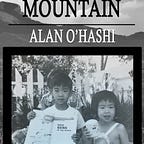Your Hemingway true sentence is the story premise
By Alan O’Hashi from True Stories of a Mediocre Writer
Hemingway says to write “one true sentence.” To get started, I’m talking literally about writing one sentence that I call the story premise.
I’ll deconstruct the first pitch line I gave for Beyond Heart Mountain when the publisher picked up my memoir.
The fundamental truth about storytelling, stories are finite. There’s a beginning, middle, and end that fit into novels and memoirs of infinite lengths. For screenwriting, stories are even more finite in that the page limitation is anywhere from 90 to 120 pages for a feature-length movie.
That’s it.
Adapting a novel to a movie means condensing, say 500 pages, down to 100. Writing a one-sentence story premise takes discipline and includes a protagonist/s/ (The Who), their goal (The What), and their challenge (The Why).
Who — There’s no need to name the protagonist: Names have no intrinsic information and are useless words. Instead, tell us something about the story.
A Japanese American Baby Boomer learns from his personal experiences…
What — Clearly present the main goal: This is what drives your story.
